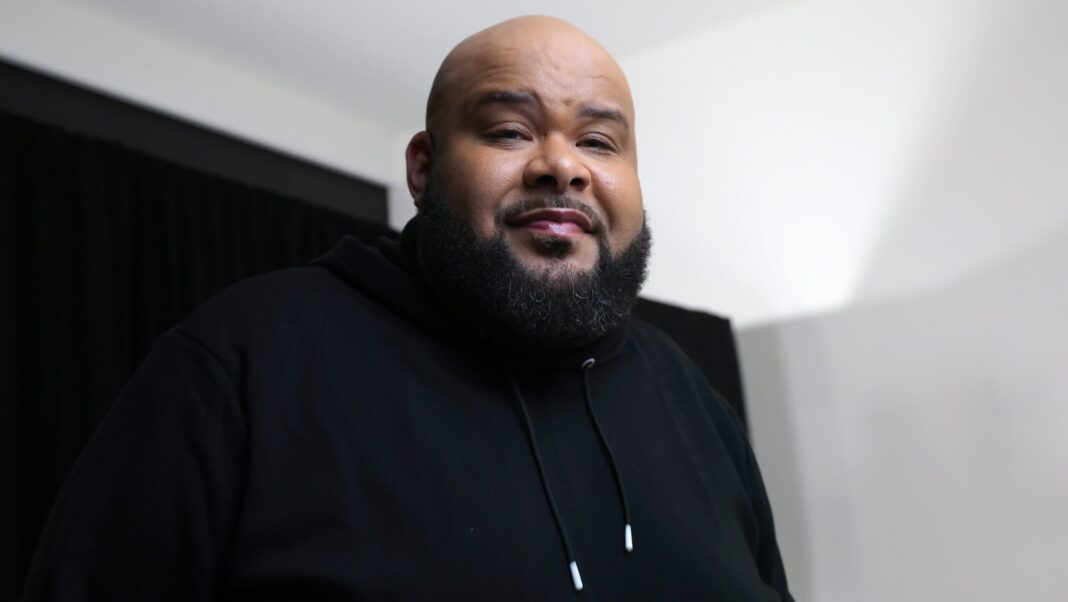A Moment of Reflection at New York Fashion Week: Sergio Hudson’s Call to Action
New York Fashion Week is an annual spectacle, one where glamour meets creativity amid promenades of dazzling gowns and relentless camera flashes. Yet, this season, the runway brought forth a wave of introspection thanks to designer Sergio Hudson. The conversation transcended mere aesthetics, becoming a poignant inquiry about the support—or lack thereof—among Black A-list celebrities for Black designers.
The Trigger: An Instagram Story
The conversation erupted when Hudson posted a story on Instagram that resonated broadly. He posed a striking question: “Why aren’t more Black A-list celebrities supporting Black designers?” This question caught fire instantly, sparking debates and discussions across social media platforms.
While some applauded Hudson for his boldness and transparency, others felt he was unfairly singling out his peers. Regardless of the sentiments surrounding his message, it fueled a much-needed dialogue about representation and support within the fashion industry—an arena that has historically struggled with inclusivity.
Hudson’s Clarification
After the viral reaction to his post, Hudson took to Instagram to clarify his intentions. In a heartfelt message, he emphasized that he was not hurt or upset but rather sought to address the recurring questions he’d been receiving throughout NYFW. “Hey everyone, I just want to clear the air a bit after a simple story I posted seems to have gone viral,” he wrote. “My show was well attended by people who love me and our brand—industry pros, celebrities, my amazing clients, and the press all showed up to support.”
This sentiment reflects a deep appreciation for those who did show up, solidifying his stance on the supportive community around him while indicating that larger systemic issues are still at play.
The Front Row: A Mixed Representation
Hudson’s Spring 2026 Ready-to-Wear Show was far from empty. The front row was adorned with notable Black personalities, including Mary J. Blige, Jordan Chiles, and Sherri Shepherd. Even reality TV star Olandria made waves by strutting down the runway. This showcase of talent underscored Hudson’s ability to attract important figures within the Black community, highlighting the potential for growth and recognition for Black designers.
Yet, the fact remained that some high-profile Black celebrities were noticeably absent at his show, sparking questions about their choices in attendance at different events.
The Impact of “White Adjacency”
Hudson’s Instagram post hinted at a larger phenomenon within the industry: the concept of “white adjacency.” His words—“White adjacency is a hell of a drug” —suggest a belief that some individuals may consciously or subconsciously perceive proximity to whiteness as an avenue to greater relevance or success. He expressed hope that his peers could find healing and understanding in this regard, urging a collective realization that Black designers and brands bring their own significance to the fashion world.
These thoughts reflect an ongoing struggle for Black creatives, emphasizing the need for a shift in narrative. Hudson articulated a sentiment that many in the community share: that relevance and success should not be predicated on association with white designers or brands.
Challenging Perceptions and Narratives
The designer’s remarks served not only to challenge perceptions of status and success but also as a call to action for Black celebrities to recognize the importance of cultivating their own narratives. Hudson made it clear that his intention was simple: to encourage solidarity within the community. “This is a lesson I’m continuing to learn myself every day,” he wrote, acknowledging his own journey while inviting others to reflect on theirs.
By addressing these themes, Hudson invites open conversations around visibility, support, and the importance of uplifting one another in a space where representation is often lacking.
A Joyous Week with Unspoken Truths
In closing his clarification, Hudson reflected on how unfortunate it felt to have to discuss this during such a “joyous week.” However, he wanted to ensure that the narrative surrounding his original post didn’t spiral out of control. His mix of joy and responsibility highlights the complex emotions many designers and artists grapple with in an industry teeming with contradictions.
As the conversations continue to unfold in the wake of his remarks, Hudson’s journey encapsulates a moment where fashion meets social awareness, making clear that the runway can serve as a powerful platform for change and dialogue.



